The Paycheck Protection Program (“PPP”) has begun accepting loan applications again since the policy lapsed in August. Congress has allocated $284 billion through the revamped PPP, specifically targeting the hospitality, restaurant, and hotel industry. The revised program, which was put into effect in January, also sets aside aid for low-income communities and first-time borrowers who were shut out from funding last year.
The new PPP will prevent larger, franchise oriented public companies like McDonalds or Applebees from applying. Instead, the new rules will direct funding toward smaller businesses whose revenues have fallen drastically as a result of the pandemic. The law also set aside about $90 billion for first-time loan recipients, smaller-scale borrowers, and smaller community financial institutions that focus their lending on the minority and other underrepresented people.
Loans under $150,000 will have abbreviated forgiveness requirements in an attempt to attract borrowers who can’t afford to employ professional accountants. Restaurants will be able to use funds to pay vendors or to help erect outdoor dining setups, in addition to funding Covid-19 protective equipment and barriers.
Businesses should apply for the PPP funds as expeditiously as possible. The initial $350 billion round of funding last April, was exhausted in less than two weeks. In 2020, banks often prioritized pre-existing customers and billion-dollar restaurant chains over smaller, independent outfits — and local businesses operated by Black or Latinx people. The federal government estimated that only 8 percent of last year’s paycheck loans went to the food service and hotel industry, even though they have been the most adversely impacted businesses due to the corona virus restrictions.
On March 31, 2021, the PPP will stop taking applications, so time is of the essence. The bulk of the loan must go toward worker salaries, but the funds can be used for other purposes too.
What are the general requirements for the new PPP?
Restaurants and bars can apply for a “second-draw” PPP loan if they meet all of the following criteria:
• Their gross receipts declined by 25 percent;
• They were actually open for business before February 15, 2020, except for seasonal employers;
• They have fewer than 300 employees per location. First-time borrowers can have up to 500 employees per location; and
• They are not a publicly traded company.
If your restaurant meets all the PPP requirements, how much funding can you access?
Hospitality establishments that meet the PPP guidelines can apply for a second-draw forgivable loan calculated at 3.5 times their monthly payroll, up to $2 million. First-time borrowers can receive up to $10 million. Those loans will convert to grants if restaurants abide by a variety of strict requirements. Businesses must spend at least 60 percent of the funds on payroll. Those venues will still have to maintain their employee headcount which may be particularly challenging for the hospitality industry given operational restrictions on bars and restaurants.
The remaining 40 percent of funds can be used on a variety of other expenses, such as mortgage interest, utilities, rent, or on a variety of measures designed to protect workers or on supplier costs. For instance, the funds can be used on worker protection measures like sneeze guards, drive-thru windows, air ventilators, health screening, and outdoor dining build-outs. Hospitality industry venues can also now use paycheck funds to pay their suppliers for current or previous orders of “perishable goods,” which is to say the regular shipments of food or alcohol that restaurants must purchase to stay in business.
Given the application deadline of March 31, 2021, waiting and hoping for another stimulus package is not advised. With the decline of Covid-19 cases and the return of better weather, it is likely that home-weary adults will bring an economic surge to the hospitality industry.
Where are the application forms? The SBA website has the application right here.
